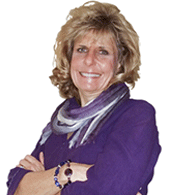Court Ruling Unlikely to Stall Conflict Minerals Compliance
09/15/2015 //

A recent ruling by a U.S. appeals court is unlikely to suspend the electronics industry’s compliance efforts toward the Dodd-Frank Wall Street Reform and Consumer Protection Act, also known as the “conflict minerals” rule. In mid-August, the District of Columbia’s U.S. Circuit Court of Appeals decided that the requirement that companies state whether their products are "DRC conflict free" or not violates the First Amendment.
Within the electronics industry, the Dodd-Frank Act has arguably had the largest impact on interconnect, passive and electromechanical (IP&E) component makers and distributors. Leading capacitor manufacturers such as AVX Corp. and KEMET Corp. use one of the four conflict minerals, tantalum, extensively in their products. Compliance with the act requires electronics OEMs to disclose whether or not they source materials from regions such as the Democratic Republic of Congo (DRC) where sales of raw minerals fund rebel activities and promote human rights abuses. To do so, OEMs push audits back through their supply chains, seeking information about their partners’ sourcing strategies.
The effect, experts say, is that companies that have no legal obligation to report to regulatory authorities spend a considerable amount of time collecting and disseminating compliance information. Distributors, which merely resell their suppliers’ components, do not have direct visibility into sourcing and materials. “I spend approximately 30 percent of my time on conflict minerals customer questions,” said Steve Summers, Product Operations Project Manager for TTI, “I’ve received over 300 e-mails since the beginning of June 2015.”
Compiling the data was initially very challenging, concurs Bill Millman, AVX’s director of corporate quality. “The SEC provided a three year period over which reporting companies could evolve and grow its reporting process in recognition of the challenges. The adoption of a standardized reporting template early was a critical step in its success,” he said. “We have been through a number of versions of the template, each being relatively painless but providing greater ease of integration of the data and its promulgation along up and down the supply chain.”
But it has been the cost of gathering and disseminating that data – the basis for the National Association of Manufacturers challenge to the rule – that’s been hardest for the supply chain to swallow. The government’s estimate that publicly traded companies would spend between $3 billion and $4 billion to adhere to the rule is considered too low. Moreover, there’s no evidence that OEMs or even consumers make their purchasing decisions based on compliance. “While no one discounts the noble goal the provision sets out to accomplish, there is no doubt that cost has been added to service the market,” said Kevin Sink, Vice President Total Quality for TTI.
Suppliers such as AVX and KEMET have gone to painstaking lengths to trace the origins of the materials they use. “In order to develop our internal policies we had undertaken supply chain and chain of custody studies all the way back to individual mines for tantalum and their transport routes,” said Millman. “This entailed tremendous involvement with multi-stakeholder groups including government (national, regional, local and international), non-government organizations, world agencies such as the United Nations, OECD, as well as OEMs, the Great Lakes Region's Councils (ICGLR), traders, miners and many other interested parties on the ground such as church, tribal and army leaders and representatives.”
KEMET is one of six companies to submit a conflict minerals disclosure report to an external audit as of August 2015. The company can report its tantalum surface mount (MnO 2), tantalum polymer surface mount (KO), ceramic surface mount and electrolytic non-surface mount capacitors are conflict-free.
The electronics supply chain in general has embraced compliance regardless of the cost. AVX was instrumental in developing the closed-pipe sourcing model Solutions for Hope. “If reporting companies were to avoid sourcing from these countries due to lack of confidence in their conflict-free nature then the social economic impact on many hundreds of thousands of local people would be devastating,” Millman said. Top-tier OEMs such as Intel and Hewlett-Packard Co. joined the initiative.
It is unlikely that the appeals court ruling will stall forward momentum as more corporations embrace social responsibility initiatives. It is also increasingly likely that a conflict-free minerals regulation will soon be adopted by the European Union. The EU legislation is likely to cast a wider net than Dodd-Frank by adding elements such as cobalt to the list and encompassing any region that is perceived to be violating human rights.
That’s not the only adjustment the EU may make: instead of a voluntary self-certification program for conflict minerals disclosure, the EU may mandate measures such as third-party audits, according to Scott Wilson, content solution strategist for the Electronics & Media Group at consultancy IHS. In May, members of the European Parliament requested mandatory certification for EU importers of conflict minerals. This would include compulsory independent and third-party audits of smelters and refiners to check due diligence. Members further proposed that the 880,000 downstream European companies that use conflict minerals in manufacturing consumer products provide information on the steps they take to identify and address conflict mineral risk in their supply chains.
Fewer than 20 percent of publicly traded companies impacted by the U.S. conflict minerals legislation filed reports in 2014, said Marc Church, president of U.S. Sales and Operations for compliance solutions provider iPoint Inc., in part because of the rule’s challenge in court. However, leading American electronics manufacturers and technology equipment vendors now generate substantial portions of their sales outside North America. Apple, for example, gets more than 60 percent of its quarterly revenue from international sales. It is unlikely Apple or any other corporation would use its First Amendment rights to source components from war zones or reject requests from analysts and consumers to disclose this information.
Barbara Jorgensen

Barbara Jorgensen has more than 20 years experience as a business journalist, working for leading electronics industry publication such as Electronic Business, Electronic Buyers’ News and EDN. Most recently Jorgensen was Community Editor for supply chain community EBN for its relaunch in 2010. Prior to rejoining EBN, Jorgensen was a senior editor at Electronic Business, the pre-eminent management magazine for the electronics industry, featuring world-class manufacturing companies such as Dell, Hewlett-Packard, Cisco and Flextronics International. Jorgensen spent six years with Electronic Buyers’ News print as managing editor, distribution, winning several awards for coverage of the distribution beat.
A graduate of the University of Binghamton (formerly the State University of New York (SUNY) Binghamton, Jorgensen began her journalism career with the Gannett newspaper chain. She has worked for a number of local newspapers in the Greater Boston area and trade journal publishers Reed Business Information and CMP. She spends her spare time trying to find out the nature of the teenager and plans to write a book if she succeeds.